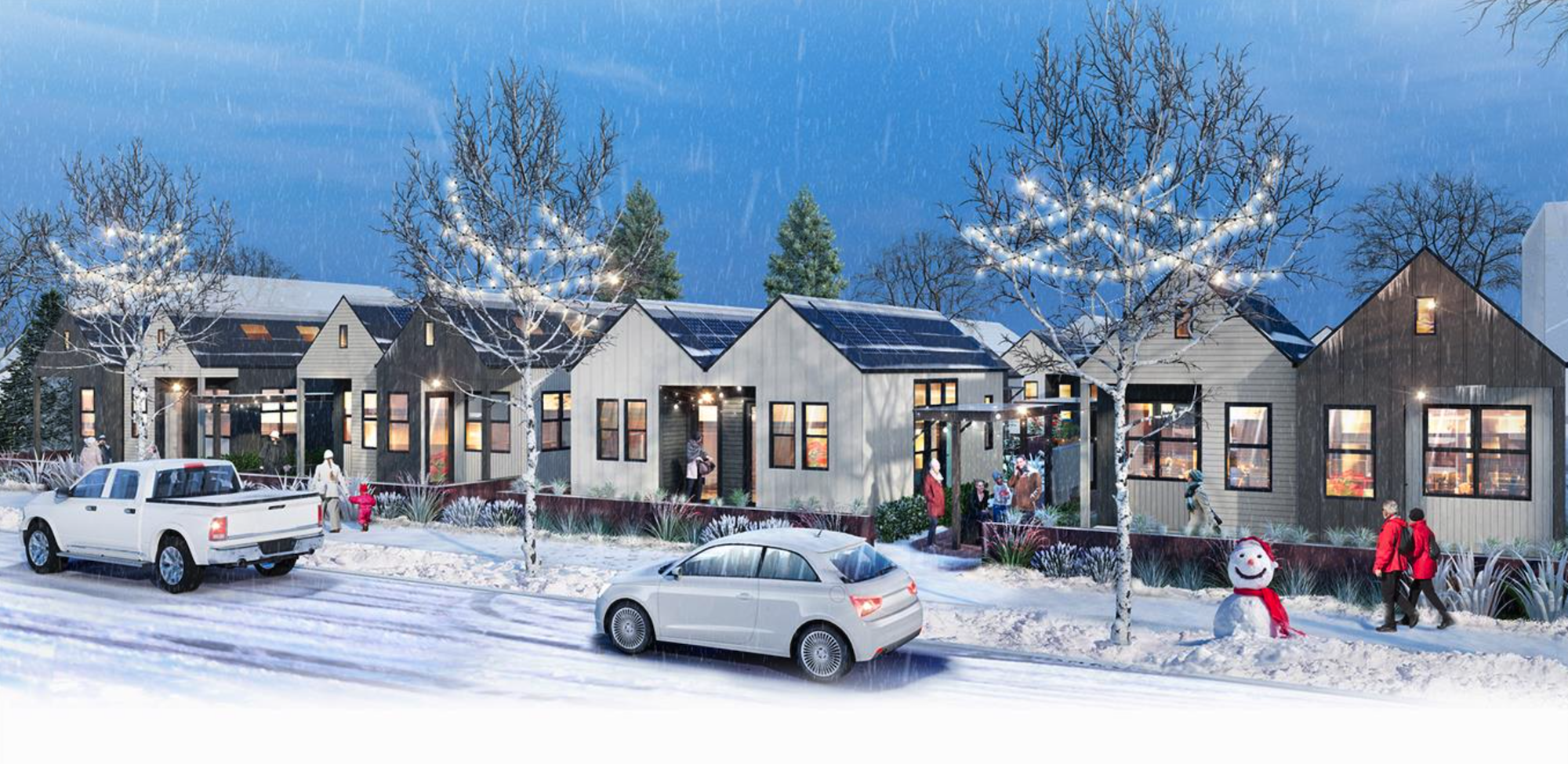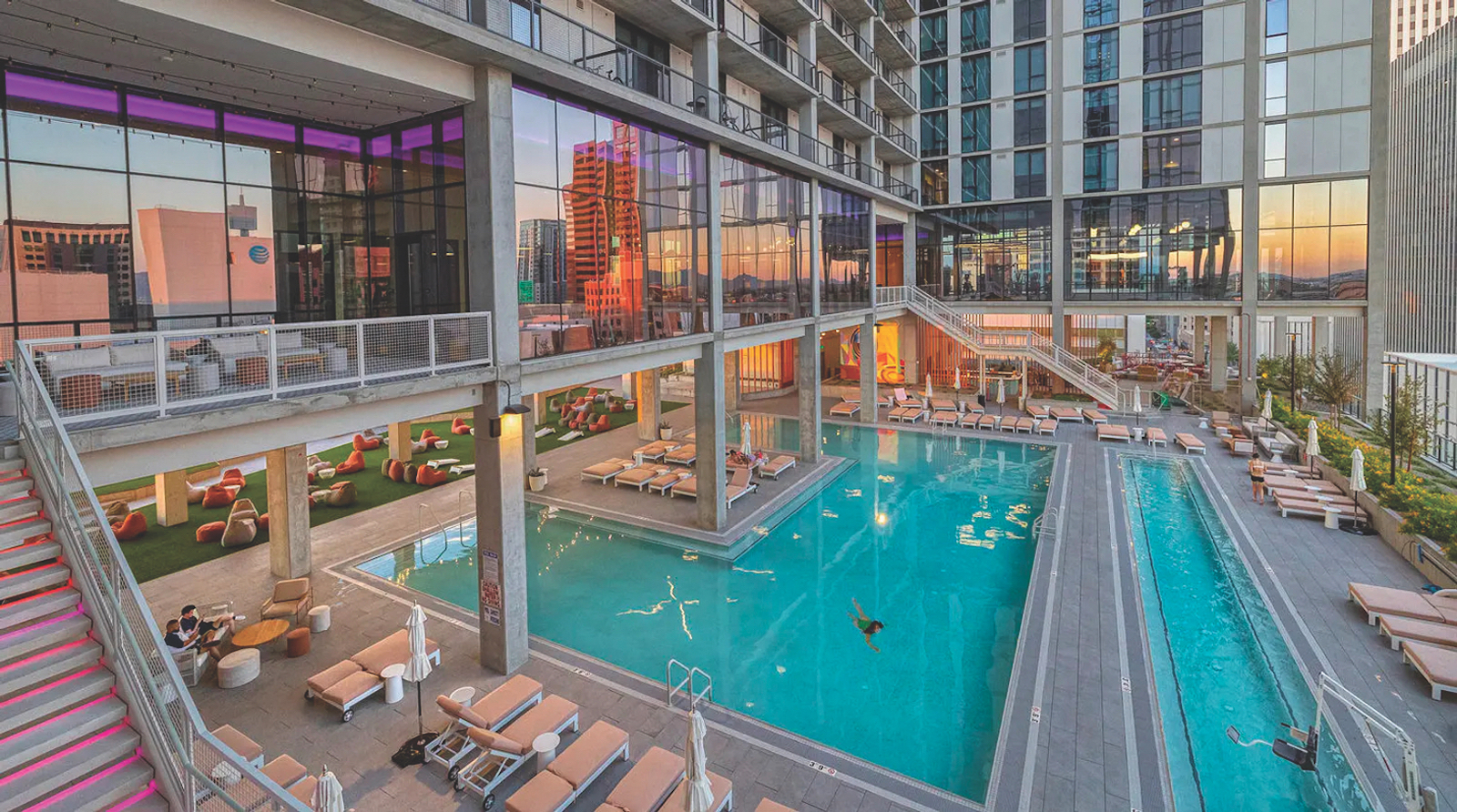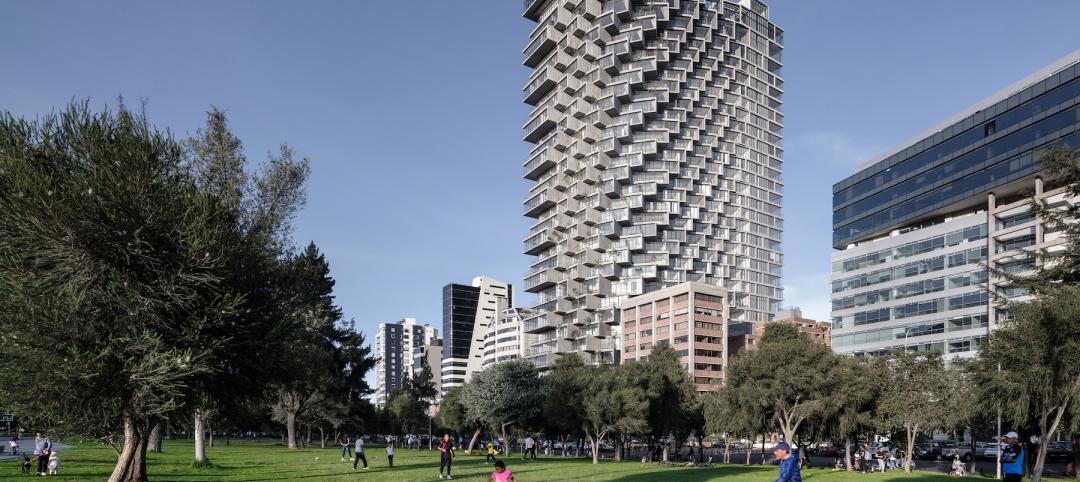The booming multifamily sector shows no signs of a significant slowdown heading into 2023. Here is a round up of Giants 400 firms that are driving innovation in this sector:
Clayco and architecture firm FitzGerald completed the 20-story, 330-unit X Phoenix development, a mixed-use residential high-rise in downtown Phoenix that contains, among other rental units, dedicated space for co-living. This shared apartment model is designed to cater to working professionals seeking convenience, community, and modern shared amenity space at more attainable prices in expensive rental markets. The development also includes an indoor bike mezzanine, 105,500-gallon pool, five-story parking garage, and 50,000 sf of shell space that will include a commercial restaurant.
Dahlin Group developed a tiny home prototype, Mod Hive, to help address the affordable housing shortage in Salt Lake City. The prototype works as a small cluster on one lot or a small, planned development consisting of multiple lots. The concept involves an inward-looking site plan that creates a tiny village with space for a community garden, outdoor gathering space, and barbecue/firepit. It replicates the feel of a traditional neighborhood of two-story, single-family detached homes by employing a lower-density configuration at the front of the lot, with higher densities at the rear.

For another tiny house project, Dahlin collaborated with HomeAid Northern California and Firm Foundation Community Housing to design cost-effective tiny home villages sited on church properties, targeted at individuals facing homelessness. This partnership completed its pilot project in February 2020 with additional projects under development in 2021. In the San Francisco Bay Area, affordable multifamily developers expect to spend $700,000 to $1 million per single one-bedroom unit; the pilot village came in at $150,000-$170,000 per unit, with an entitlement process of just 12-18 months.
Dattner Architects had four Passive House projects progress through construction stages in 2021, with Santaella Gardens completed in late 2021 and receiving Passive House Certification in early 2022. These projects provide replicable models for Passive House applications to multifamily affordable housing. Santaella Gardens provides much needed workforce and affordable housing in the Bronx. Its super-insulated, airtight building envelope includes thermally broken, high-performance windows and advanced air sealing details to eliminate condensation and air exfiltration. Rooftop solar photovoltaic panels generate onsite renewable energy, with a capacity of 162.7 kW. The building has a projected energy use intensity of 20.40 kBTU/sqft/yr.
The Hall Arts Residences in the Dallas Arts District joins HKS’s growing portfolio of projects focused on creating superior spaces for the health and well-being of building occupants. The project is the first residential project in Texas to register for WELL Multifamily Certification.
Morrison Hershfield contributed to the launch of the Embodied Carbon Pathfinder, a free app for quickly estimating cradle-to-grave whole-building life cycle assessment results for multifamily buildings. The tool uses thousands of data points that allow users to find “pathways” through design choices to land on a target embodied carbon result. The project is a collaboration with OPEN Technologies and the Athena Institute.
Related Stories
Coatings | Dec 20, 2022
The Pier Condominiums — What's old is new again!
When word was out that the condominium association was planning to carry out a refresh of the Pier Condominiums on Fort Norfolk, Hanbury jumped at the chance to remake what had become a tired, faded project.
Cladding and Facade Systems | Dec 20, 2022
Acoustic design considerations at the building envelope
Acentech's Ben Markham identifies the primary concerns with acoustic performance at the building envelope and offers proven solutions for mitigating acoustic issues.
Self-Storage Facilities | Dec 16, 2022
Self-storage development booms in high multifamily construction areas
A 2022 RentCafe analysis finds that self-storage units swelled in conjunction with metros’ growth in apartment complexes.
Sponsored | Resiliency | Dec 14, 2022
Flood protection: What building owners need to know to protect their properties
This course from Walter P Moore examines numerous flood protection approaches and building owner needs before delving into the flood protection process. Determining the flood resilience of a property can provide a good understanding of risk associated costs.
Sponsored | Multifamily Housing | Dec 14, 2022
Urban housing revival: 3 creative multifamily housing renovations
This continuing education course from Bruner/Cott & Associates highlights three compelling projects that involve reimagining unlikely buildings for compelling multifamily housing developments.
Multifamily Housing | Dec 13, 2022
Top 106 multifamily housing kitchen and bath amenities – get the full report (FREE!)
Multifamily Design+Construction's inaugural “Kitchen+Bath Survey” of multifamily developers, architects, contractors, and others made it clear that supply chain problems are impacting multifamily housing projects.
Mixed-Use | Dec 7, 2022
Bjarke Ingels’ first design project in South America is poised to open next year in Ecuador
In 2013, Quito, Ecuador’s capital, opened its new airport, which had been relocated from the metro’s center to an agricultural site 12 miles northeast of the city. Since then, Quito’s skyline has been reshaped by new, vertical structures that include the 24-story mixed-use EPIQ Residences, designed in the shape of a quarter circle by Bjarke Ingels Group (BIG).
High-rise Construction | Dec 7, 2022
SOM reveals its design for Singapore’s tallest skyscraper
Skidmore, Owings & Merrill (SOM) has revealed its design for 8 Shenton Way—a mixed-use tower that will stand 63 stories and 305 meters (1,000 feet) high, becoming Singapore’s tallest skyscraper. The design team also plans to make the building one of Asia’s most sustainable skyscrapers. The tower incorporates post-pandemic design features.
Multifamily Housing | Dec 7, 2022
Canada’s largest net-zero carbon residential community to include affordable units
The newly unveiled design for Canada’s largest net-zero carbon residential community includes two towers that will create a new destination within Ottawa and form a striking gateway into LeBreton Flats. The development will be transit-oriented, mixed-income, mixed-use, and include unprecedented sustainability targets. Dream LeBreton is a partnership between real estate companies Dream Asset Management, Dream Impact, and local non-profit MultiFaith Housing Initiative.
Student Housing | Dec 7, 2022
Cornell University builds massive student housing complex to accommodate planned enrollment growth
In Ithaca, N.Y., Cornell University has completed its North Campus Residential Expansion (NCRE) project. Designed by ikon.5 architects, the 776,000-sf project provides 1,200 beds for first-year students and 800 beds for sophomore students. The NCRE project aimed to accommodate the university’s planned growth in student enrollment while meeting its green infrastructure standards. Cornell University plans to achieve carbon neutrality by 2035.

















